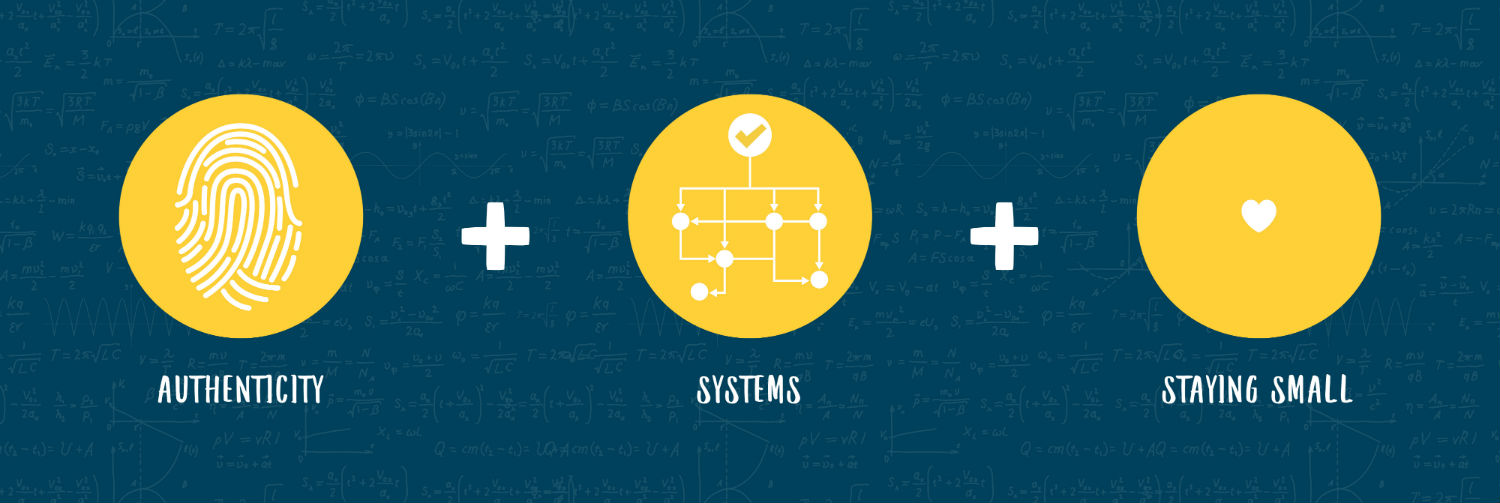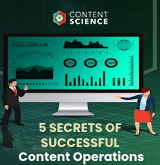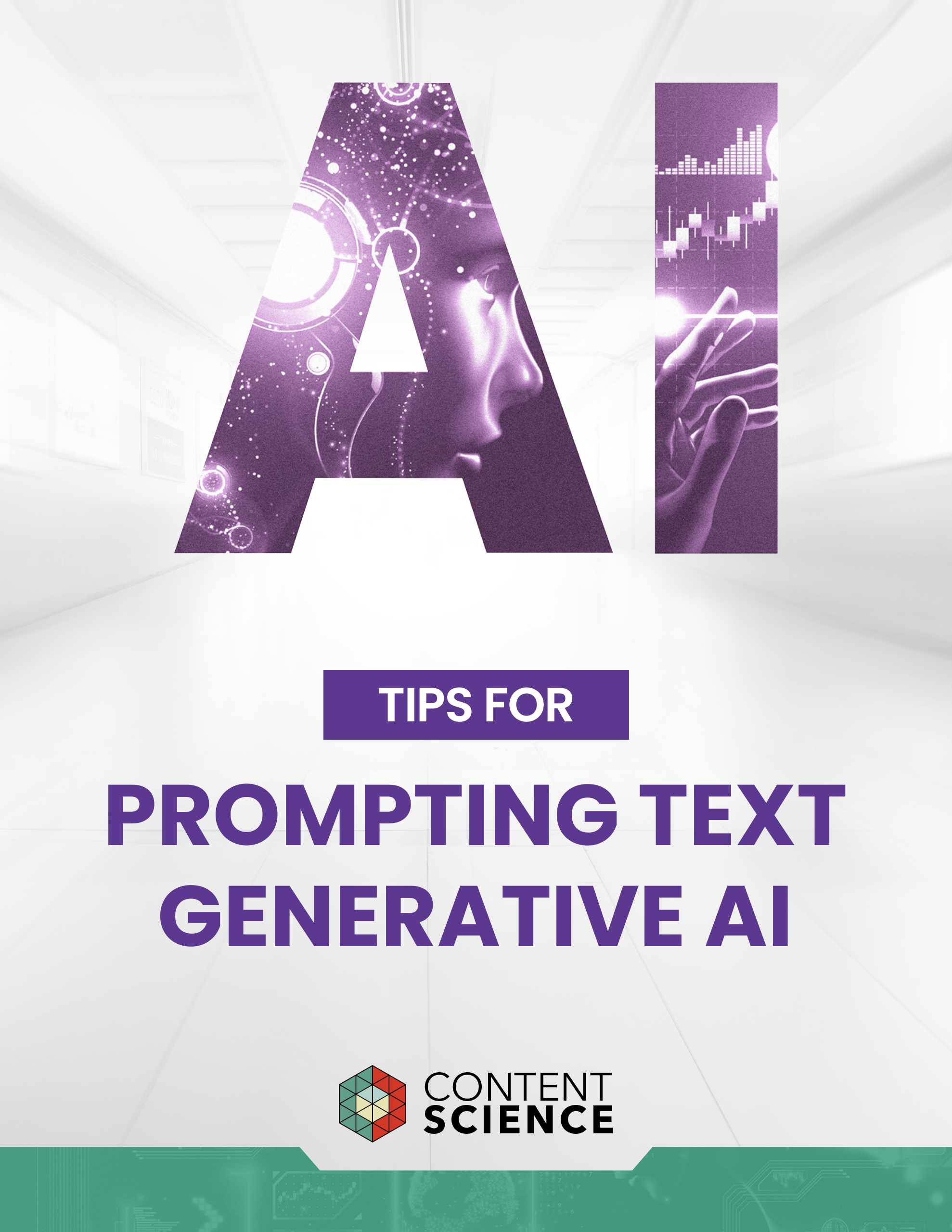

Content is everywhere, from your website to store front, advertisements to blog posts. If you’re in business, you have content and that content is the foundation of your customers’ experience with your business.
I’ve just finished reading The Content Advantage by Colleen Jones and one idea from the book really stuck with me: the notion that the future of content is soulful, systems-based, and small.
Bringing yourself to the table is really a way to connect with your customers and provide them with someone that they can trust. Taking a systematic approach to those relationships is really the only way that it works. You have to show up every day consistently with the quality that you promised to build those long-term relationships. And staying small means that you get to make your own decisions and you don’t have to check with a lot of people before you move.
I thought it would be great fun to see how the book’s advice lines up with the experiences of real-life small business owners.
For this article, I talked with Ashley White, fashion blogger and owner of Le Stylo Rouge, a content-fueled small business based in Kansas City.
Ashley started Le Stylo Rouge nearly 10 years ago and in that time she’s built a large and intensely loyal following. Twice weekly, the LSR community hears from her on topics ranging from fashion to beauty to lifestyle.
I sat down with Ashley to ask how she brought soul, systems and an small mentality to bear when building her small business.
[Susanna Guzman] Hi Ashley, can you tell us a little bit about yourself and LSR?
[Ashley White] Ten years ago, I was looking for a creative outlet and a very smart lady said to me, “You really have your act together around fashion and you’re a writer by trade. You should combine these things. Put your money where your mouth is and start a blog.”I launched Le Stylo Rouge in early 2009. I didn’t have a solid content strategy or a clear message; I figured out my voice, what I wanted to say, and how I wanted to say it as I went along. I didn’t rush it. It was really about the creative outlet and the work—and it still is—but over time people started to pay attention to it. That’s when I realized I had a little something there. Today I have a reach of over 100,000 across all social platforms, subscriptions and traffic.
My main platform is the blog; that’s the heart of Le Stylo Rouge. That’s where I’m the algorithm; I’m in control of my brand. You hear about the Instagram algorithm all the time and the way it impacts brands. I’m very passionate about telling other content creators not to build their entire brands on platforms they don’t own. And so Le Stylo Rouge lives on its own website, while social channels support it. I’m pretty prominent on Instagram, and then Facebook and Twitter a little bit less so.
I’ve heard a lot about that lately. I always recommend business owners ask, “Can my business survive if any of the social media platforms shut down?” If the answer is no, they need to get their own space.
You really have to diversify! Instagram was down for 48 hours a few weeks ago and people were losing their minds! But they were losing their minds because they were under contract with a brand to launch content on a certain day, and Instagram was their only platform. That all goes straight down the tubes if Instagram is down.
Apps like Instagram are not going to be around forever. Yes, it’s the biggest and the brightest thing right now, but so was the Titanic a hundred years ago! Something will eclipse it.
If you build your brand on a platform you don’t own and they change that platform—the way your audience interacts with your content or how much of your audience sees your content—you’re stuck. Instagram doesn’t care if you have a problem with it because they aren’t catering to your business needs, they’re catering to their own.
Diversifying and building your content on a foundation you own is smart for longevity.
That leads me to this first notion of soul being the future of content. To me, that loosely translates into being yourself. So could you talk a little bit about how you’ve been successful being yourself?
Initially, my “why” was creative expression. As I garnered this small audience, it was about breaking out of style ruts. I like to wear what I affectionately call weird things; the sort of things the industry would call edgy or avant-garde. I like to take those pieces and wear them in my Midwestern environment. I like to wear them in a way where people say, “Oh, well she doesn’t look totally ridiculous. She doesn’t look like she’s wearing a costume.” I want to inspire my audience to break out of their own sort of style ruts.
That doesn’t necessarily mean they buy the weird jacket I’m wearing, but it shows them that the weird jacket can work in the mainstream and they can try a trend without so much fear. They like watching me take style risks; hopefully that inspires them to try a few of their own.
I crafted this very casual, direct, conversational voice and tone on LSR. The way I write on the blog is really close to how I communicate in real life— I feel like authenticity rings true with an audience. If you want people to stick around and pay attention, you can’t play somebody else on the Internet—that’s just ridiculous! If I were play-acting as someone else, I don’t think that that would work for very long—probably because I’m not the best actress— but also because people would be able to tell it wasn’t authentic.
We’re hearing more and more about authenticity right now, but I don’t think it’s a new thing. It’s just a buzzword people are paying attention to now. But it’s always been true. If you’re not staying true to your voice, your message, your style and who you are, your audience is going to sniff that out. My goal is for people who know me in real life to be able to hear my voice when they read a caption or a post.
Let’s talk about systems.
One thing that has always struck me is how successful businesses build on relationships between people. Good relationships are in themselves built on trust, which develops when you show up every day in reliable and helpful ways.
What systems do you use to build and grow LSR?
Several systems that keep LSR up and running. There’s the content planning and concepting system: I like to keep LSR running a few weeks ahead of schedule. My goal is to be at least a week ahead in terms of final content. Next week’s posts are always shot, edited, written and scheduled ahead of time. They’re just sitting in the queue, waiting to go live. And then I have an editorial calendar loosely built a few weeks ahead of the content I want to create.
Having content scheduled ahead of time and an editorial calendar keeps my content clip loaded. It also provides some breathing room in case something needs to shift, a particular post falls through, etc.
For a content intelligence system, I always look to the things my users and audiences are commenting on—even when it’s not the stuff I’m actually writing about. For example, I see myself as a fashion blogger. I’m like, “Hi, look at my outfit. Do you like this? I do. Cool. Rad.”
But I was always getting comments and questions about my hair, like, “What products are you using? How do you cut it? Why does it look like that? What’s going on?” Even if the post was about a new pair of boots, people focused on my hair. I realized after a while I had this opportunity to dive into a different content vertical—more into beauty and hair, specifically.
I linked up with my stylist and made a YouTube series on hair care, hair products, etc. I linked back to that series on my blog and promoted it everywhere else. Because my audience had already been asking for this, the series took off! So much so that Beauty Brands reached out and said, “Hey, we want to bring you in as a brand ambassador for us.” That led to a natural collaboration between me and a brand because I was listening to what my users were telling me they wanted in terms of content.
Finally, around content delivery, there are people who will tell you that you need to publish at this ridiculous cadence in order to carve out your audience and stay relevant. It’s probably not just specific to the fashion blogger niche; I’m sure it’s everywhere. And I really disagree with this.
I think it’s more important to publish at a cadence you can maintain over time, because it’s about deep persistence. You should post at whatever cadence you can maintain long-term, even if that’s less publishing a week. I only publish on LSR twice a week but in those two blog posts, I give it one hundred percent. I’m able to put my full weight behind those posts in terms of content creation, implementation, and promotion.
My motto is: if you don’t have anything meaningful to say, don’t say it. Posting for the sake of posting dilutes your brand and your message. Finding a cadence that fits your lifestyle and persisting over time makes you stickier. It makes you more memorable.
If a big company has to get a bunch of its messages through the legal filter, that can slow things down and it can take some of the soulful edges off. Big brands often end up with something that most people don’t really want to engage with unless they have to.
Let’s talk some about how being small has helped you in terms of being nimble and reactive.
Being small has made it so much easier to identify and attack change. Because it is just me, there are no buy-ins to secure and no red tape to cut.
For example, a couple of years ago, I knew I needed to make my website more mobile-friendly. About 33 percent of my users at that time were on mobile (now it’s almost half) so it was necessary for me to address it with a redesign.
I shopped around for themes and found one I loved. I added it straight out of the box to my WordPress website but there were a few things I wanted to tweak and change that required a deeper level of coding knowledge—I needed a developer.
There’s no developer on staff but that’s okay because I’m small and agile. I went out, polled my friends who had blogs, and found out who they loved. I connected with this kid named Logan, who was so lovely and nice and just great to work with, and we revamped the blog, all over email and a couple of Skype calls. The whole project took a month!
Compare that to my nine-to-five, which is currently doing a redesign of its website. It’s over 20,000 pages of content with a ton of stakeholders to consult, and the project’s going to last at least a year! These organizations are bigger and hairier than my little blog but I’m able to be nimble and make these hard pivots pretty effortlessly in terms of time.
I loved my redesign project much more than I’m going to love the redesign at my nine-to-five because I was able to be truly user-driven. I polled my audience and asked what they wanted to see and then directly applied that feedback. It didn’t get diluted or funneled into a user persona, and it didn’t get vetoed by a steering committee trying to balance a bunch of interests. “This is my audience and this is what they want, so I’m going to give it to them.” That’s a lot easier to do when you’re small.
By your nature, you’re very open to learning new things and acquiring new experiences. On the day that I met you, I don’t think you’d have described yourself as a technical person but you’ve learned a huge amount since.
You don’t have to go out to a giant agency or buy hundreds of thousands of dollars worth of software in order to get your consistency and your cutting-edge personality out there.
That’s very true. Technology has absolutely been a tool for me to get leaner and meaner. I publish a blog post and that’s great if you subscribe to my blog and you get a notification in your inbox that says, “Ashley’s wearing another outfit again, you should come see it. It’s a doozy.” But if you don’t subscribe, how are you going to hear about me if you’re not seeking me out?
Years ago, before I had the tech I have now, promotion on social media meant manually posting every hour to drive people back to my post—that got draining. It was also very difficult to maintain.
Now I use a tool called Hootsuite. I can schedule everything weeks ahead of time and Hootsuite publishes—I don’t have to think about it, it’s automated. During a writing session, I can sit down and really craft a nice promotional campaign around a post whereas before I was shooting from the hip and writing promo posts on the fly that maybe didn’t always make the most sense, or feel cohesive. Hootsuite feels more intentional and it helps create a better experience for my users. That is something that has been really helpful.
I also have a monthly subscription to Photoshop. That is software that used to only be available as a full package that cost hundreds of dollars and had a huge learning curve to master. But now when I can’t quite figure out how to remove some homegirl’s minivan from the back of my outfit post, I can hit YouTube and say, “How do I remove an image from a background?” All of a sudden, here’s a ton of short tutorials with screen shares and I’m being shown exactly how to remove said minivan. I can tailor Photoshop to my needs, my audience’s needs, and I can get it done fast for little to no money.
One last question. Let’s pretend I’m a plumber and I have my own business. Can you give me some advice?
So you own a small business? Well, it’s really about your face and your personality. You’re selling that as much as you’re selling your services. You need to know who you are, what you have to say and what you have to offer. Then you’ve got to match that with your users’ needs. I think that is what you would call the “soul.” The personality matters in building trust with an audience, and it’s easier to do when you’re small.
Then there are systems. You have to figure out what systems to implement in order to get the work done. For me, that’s shooting, editing, and writing in batches at different points throughout the week. A few hours here, a few there. Batch work is the only way I’m able to do both the blog and my full-time job. People ask me, “How do you do both?” And I say, “Because I never do either one for eight full hours at a time.”
It’s way easier for me to balance two jobs if I’m able to take stuff in chunks and incrementally climb a mountain versus looking up from the base and thinking, “I can never do this.”
Finally, I think being small is smart. There’s so much big in the world—and the big seems so clunky. When you’re a huge organization, your social media team is ten people deep, and none of them really know the voice of the brand—you can’t turn on a dime. But when you’re small, you’re agile!
I’m going to close us out by saying thank you our readers and reminding them that whatever business they’re in, they have content and that can contribute to their customer experience. And it can be their competitive advantage.
Events, Resources, + More
5 Secrets of Content Ops Success: Webinar
Learn how the most successful organizations scale and mature content operations. Based on our research with 700+ content leaders and professionals.
The Ultimate Guide to End-to-End Content
Discover why + how an end-to-end approach is critical in the age of AI with this comprehensive white paper.
The Content Advantage Book
Learn more about the much-anticipated third edition of the highly rated book by Colleen Jones. Preorder the electronic version.
Course: Prompting Text Generative AI
Learn how to bring out the full potential of text generative AI to create impactful content from this on-demand course.
20 Signs of a Content Problem in a High-Stakes Initiative
Use this white paper to diagnose the problem so you can achieve the right solution faster.
Upskill with Content Science Academy
Training for modern content roles through on-demand certifications + courses or live workshops.








Comments
We invite you to share your perspective in a constructive way. To comment, please sign in or register. Our moderating team will review all comments and may edit them for clarity. Our team also may delete comments that are off-topic or disrespectful. All postings become the property of
Content Science Review.